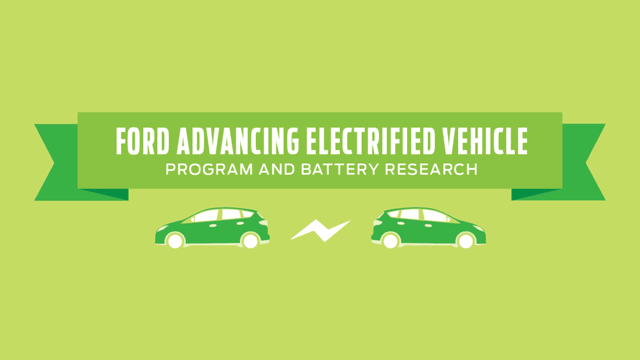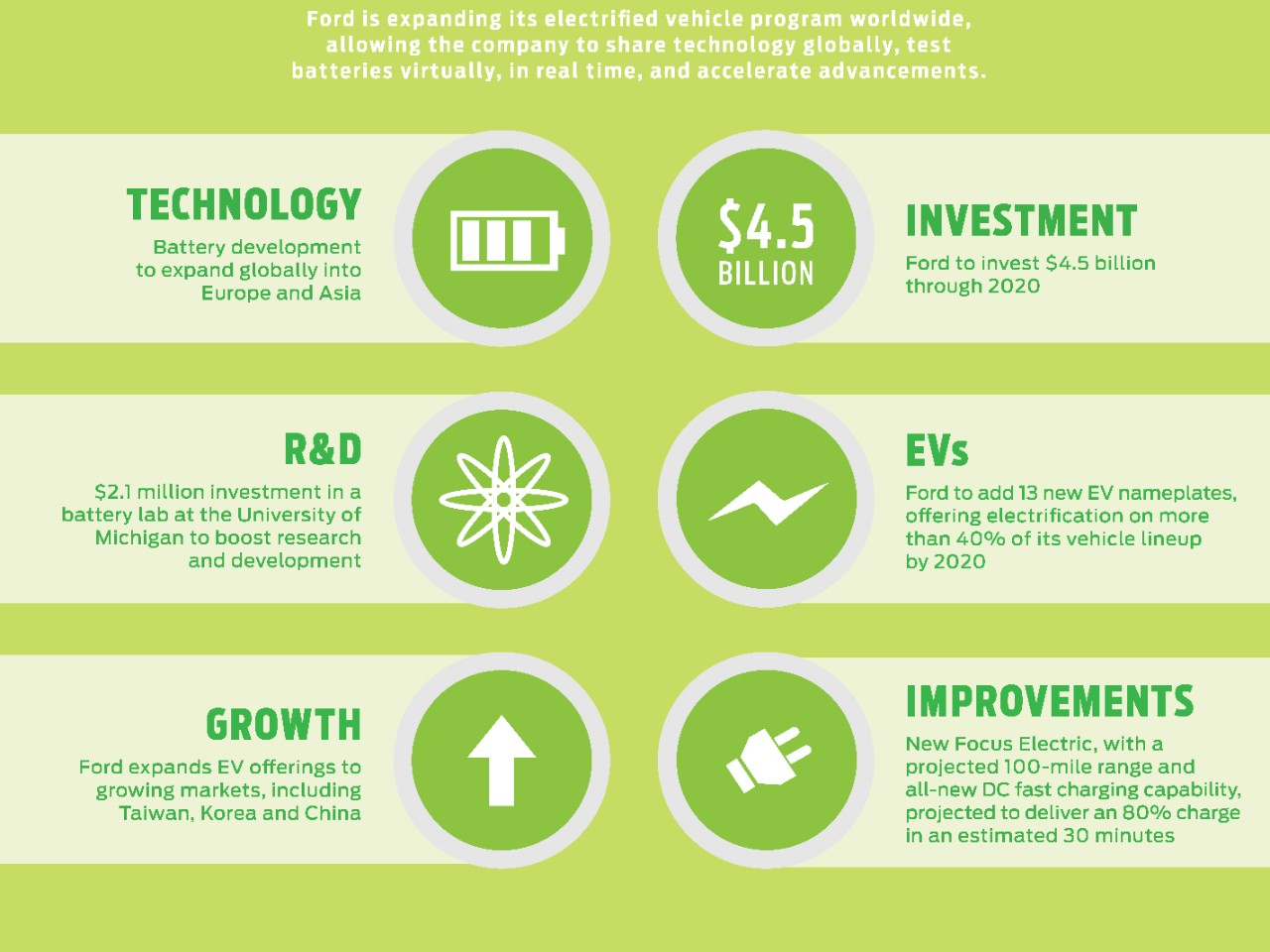- Ford is investing an additional $4.5 billion in electrified vehicle solutions by 2020, including the new Focus Electric with all-new DC fast-charge capability, which delivers 80 percent charge in an estimated 30 minutes and projected 100-mile range
- The company is adding 13 new electrified vehicles to its product portfolio by 2020; more than 40 percent of Ford’s nameplates globally will be electrified by the decade’s end
- Ford also redefining how future vehicles are created, moving from a features-based product development to a customer-experience-led process, applying insights from social scientists
Ford is adding 13 new electrified vehicles to its portfolio by 2020, when more than 40 percent of the company’s global nameplates will come in electrified versions. This represents Ford’s largest-ever electrified vehicle investment in a five-year period.
On the way next year is a new Focus Electric, which features all-new DC fast-charge capability delivering an 80 percent charge in an estimated 30 minutes and projected 100-mile range – an estimated two hours faster than today’s Focus Electric.
The new Focus Electric, which starts production late next year, also will provide North American and European customers:
- SmartGauge with EcoGuide LCD Instrument Cluster, which offers a multitude of customizable displays that can help the driver see real-time EV power usage to help maximize vehicle efficiency
- Brake Coach, another smart feature that coaches the driver on how to use smooth braking to maximize the energy captured through the Regenerative Braking System. The more energy a driver captures through braking, the more energy is returned to the vehicle’s battery
- Fun-to-drive character, with agile steering and handling engineered into the vehicle to give drivers a more connected feel to the road
Ford’s shift to add electrified vehicle solutions answers increasing global trends calling for cleaner, more efficient vehicles.

Experience-Led Design
Ford also is reimagining how to set itself apart in the marketplace by focusing on the customer experience and not just the vehicle itself. The company is changing its product development process to support the shift.
“The challenge going forward isn’t who provides the most technology in a vehicle but who best organizes that technology in a way that most excites and delights people,” said Raj Nair, executive vice president, Product Development. “By observing consumers, we can better understand which features and strengths users truly use and value and create even better experiences for them going forward.”
In addition to traditional market research, Ford is investing in social science-based research globally, observing how consumers interact with vehicles and gaining new insights into the cognitive, social, cultural, technological and economic nuances that affect product design.
“This new way of working brings together marketing, research, engineering and design in a new way to create meaningful user experiences, rather than individually developing technologies and features that need to be integrated into a final product,” Nair said. “We are using new insights from anthropologists, sociologists, economists, journalists and designers, along with traditional business techniques, to reimagine our product development process, create new experiences and make life better for millions of people.”
Next year, Ford is doubling the number of projects that use ethnographic research versus this year.
The team of social scientists already has spent months exploring topics such as the future of luxury transport, how people form relationships with their cars and the role of trucks in the American heartland.
ReD, a social science-based strategy consultancy, has been innovating with consumer goods and pharmaceutical companies for a decade. ReD started working with Ford – its sole automotive client – in 2012.
During the past three years, the team has invested more than 4,000 hours with thousands of vehicle users in more than 25 cities worldwide, taking 80,000 photos, nearly 3,000 hours of video and more than 8,000 pages of field notes, feeding countless insights to improve the product creation process.
“For 70 years, market research has been done by asking people for their opinion. But
Ford has always been fundamentally skeptical about that. Henry Ford used to say, ‘If I asked people what they wanted, they would have asked for a faster horse,’” said Christian Madsbjerg, founder of ReD Associates and author of The Moment of Clarity. “I chose to work with Ford because this approach is in their DNA and is setting the company at the forefront of this advanced and bold process, which is redefining market research and silo-busting the way the company operates.”
Another new twist to the product development process is that designers no longer just sketch products but also full customer experience illustrations that visualize the experience each product is meant to deliver. The series of vignettes define a unique user journey that seamlessly integrates both hardware and software experiences.
This user experience design technique also plays an important role in developing the Ford Smart Mobility plan, which is designed to take the company to the next level in connectivity, mobility, autonomous vehicles, the customer experience and data and analytics.
“As both an auto and a mobility company, we at Ford are going further than just designing the product to move people from point A to point B,” Nair said. “We are considering the way customers interact with our vehicles as a unified experience, looking for ways to excite and delight customers and make their lives better.”


No comments:
Post a Comment